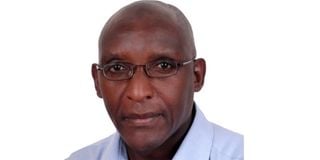Is EAC a mere pipe dream?

Author: Okodan Akwap. PHOTO/FILE.
What you need to know:
Mr Okodan Akwap says: The way the original members revived the EAC bloc that collapsed in 1977, was grossly faulty.
A story headlined, ‘Ban Kenyan goods – MPs’ in the Daily Monitor of March 10, once again reminds us how unstable the East African Community (EAC) is. Our lawmakers called Kenya “a bully” in the region. They called for “a tit-for-tat response to the ‘unnecessary’ ban on Ugandan and Tanzanian products.”
I was not at all surprised. I have consistently held the view that the way Uganda, Kenya and Tanzania – the original members in 1990s revived the EAC bloc that collapsed in 1977 , was grossly faulty.
In fact, at the time of heightened optimism over the idea of an EAC political federation in the mid-2000s, the late Pro Patrick Asea and I tried to warn everyone that the EAC was skating on thin ice. Asea was one of the world’s leading economists. He had once headed the Economic and Policy Research Centre at Makerere University.
I was just a holder of an MA degree in International Relations and Diplomatic Studies awarded by Makerere University in 2003.
Our argument was very simple. We held that politicians had made a terrible mistake to revive EAC at the second level of a customs union, skipping the first stage of a free trade area.
We argued that if the partners traded among themselves for decades, there would come a time when the move to the second level – a customs union – would follow naturally. The trend would go on to a common market and a monetary union as transitional stages to a political federation, the icing on the cake.
New Vision gave Asea space to express his opinions. Similarly, the Daily Monitor, then led by Dr Peter G Mwesige as executive editor, gave me space. Today, allow me to revisit two of the articles I wrote.
In an article titled, ‘East African Community an excuse for Museveni to continue clinging on’ in the Daily Monitor of January 12, 2006, I analysed integration in the context of the theory of functionalism.
I wrote: “People who developed this theory argue that regional or global integration is done best through the achievement of economic, social and technological cooperation first.
These are the determining factors. Once that level is deliberately accomplished, then the need for a political federation should eventually arise as cooperation expands to embrace the whole caboodle of activities in the region.”
I continued: “The process requires partners, first, to build strong supranational institutions and other structural arrangements. This is not easy. That is why sometimes it is risky to advance beyond the first level of a free trade area.”
You will remember that East Africa had “fast-tracked” the process such that the second level – a customs union – was hurriedly put in place on January 31, 2005. And it was the politicians who were recklessly pushing people forward.
In that regard, I argued: “Technocrats and private sector players – not politicians like Museveni – would be pivotal in the process of attaining incremental structural integration that draws its strength from a convergence of interests among partner states.”
I went on: “Look at the divergent political landscape. Kenya and Tanzania have presidential term limits. Uganda has recently discarded this constitutional provision, apparently to let Museveni carry on ad infinitum. Now, instead of an arrangement driven by technocrats, businesspeople and mature institutions, the ‘visionary’ sees the EAC as his pet project, arguing: ‘I want to leave a strong East Africa.’ How will Museveni pull it off when there is a crying need for strong institutions and a large middle class private sector?” I echoed this in an article titled, ‘Turning the spirit of East African cooperation into a campaign issue’ in the Daily Monitor of January 24, 2006.
I stated: “One of the most misleading impressions given by NRM trumpeters during these heady days of electioneering is that President Museveni is the kingpin of East African cooperation. The president himself attached wings to this fallacious impression by turning the complex matter of regional federation into a major campaign issue for the February 23 election. He says he cannot retire leaving the region weak, implying wrongly that the future of EAC rests on his shoulders.”
My point: We have no “brothers/sisters” in Kenya, Tanzania, Rwanda, Burundi, South Sudan and Congo. We have neighbours. We have our national interests. They have theirs. We have regional integration if these divergent interests can be made to move in one direction. One man can’t do it.
Dr Akwap is the deputy vice chancellor for academic affairs at Kumi University. [email protected]




